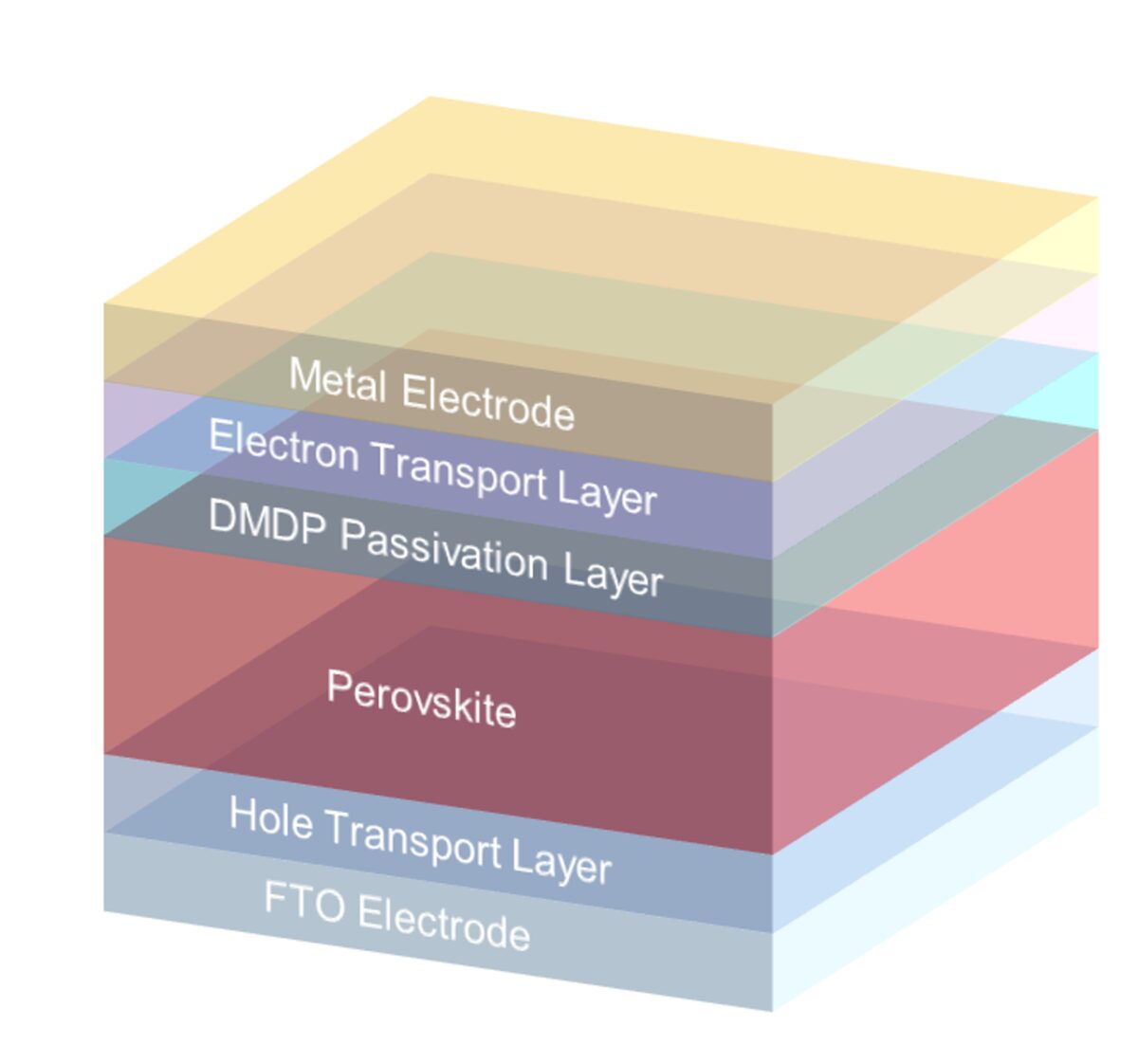A group of researchers led by Northwestern University in the United States announced it achieved a power conversion efficiency of 25.1% for a perovskite solar cell with an inverted configuration.
The US Department of Energy's National Renewable Energy Laboratory (NREL) has certified the result.
Inverted perovskite cells have a device structure known as “p-i-n”, in which hole-selective contact p is at the bottom of intrinsic perovskite layer i with electron transport layer n at the top. Conventional halide perovskite cells have the same structure but reversed – a “n-i-p” layout. In n-i-p architecture, the solar cell is illuminated through the electron-transport layer (ETL) side; in the p-i-n structure, it is illuminated through the hole‐transport layer (HTL) surface.
“Inverted perovskite solar cells are known for their impressive stability but have been held back by lower efficiency in turning sunlight into electricity,” the research's lead author, Cheng Liu, told pv magazine. “This issue mainly arises at the point where the perovskite layer meets the electron transport layer, causing energy loss instead of being converted into useful power. The energy loss is primarily caused by carrier recombination, especially at the interface between perovskite and the electron transport layer.”
The research group utilized a pair of special molecules to interface to address the complex carrier recombination issue. “Firstly, we used sulfur-modified methylthio molecules to passivate surface defects and suppress recombination through strong coordination and hydrogen bonding,” Liu explained. “Secondly, we used diammonium molecules to repel minority carriers and reduce contact-induced interface recombination achieved through field-effect passivation.”
The scientists built the cell with a substrate made of fluorine-doped tin oxide (FTO), a hole transport layer (HTL) made of nickel(II) oxide (NiOx) and phosphonic acid called methyl-substituted carbazole (Me-4PACz), a perovskite absorber, the passivation layer, a buckminsterfullerene (C60) electron transport layer (ETL), a bathocuproine (BCP) buffer layer, and a silver (Ag) metal contact.
Popular content
According to the researchers, their passivation approach led to a five-fold increase in carrier lifetime and a three-fold reduction in photoluminescence quantum yield losses. As a result, the inverted perovskite solar cells maintained stable operation at 65 C for over 2,000 h.
“This marks the first time inverted perovskite solar cells have crossed the 25% efficiency barrier following rigorous asymptotic maximum power scan protocol,” Liu said, noting that the previous record was 24.1%.
With the cell, the research team also fabricated all-perovskite tandem solar cells with an efficiency of up to 28.1%, an open-circuit voltage of 2.14 V, a short-circuit current density of 15.6 mA cm2 and a fill factor of 84.0%.
“We consider the multimolecule passivation approach, along with diverse functionalities, as a promising direction for exploring next-generation passivation strategies to achieve improved performance and stability in perovskite optoelectronics,” Liu explained.
The research team presented the new solar cell technology in the paper “Bimolecularly passivated interface enables efficient and stable inverted perovskite solar cells,” which was recently published in Science.
This content is protected by copyright and may not be reused. If you want to cooperate with us and would like to reuse some of our content, please contact: editors@pv-magazine.com.



This is a good initiative
This is a good initiative. I would appreciate receiving updates on new activities.